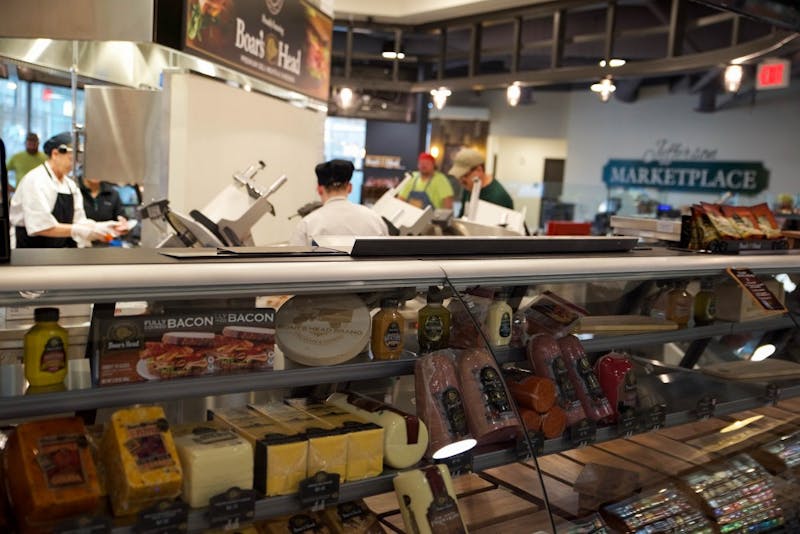Landing Page
Special Projects
This story is part of a series of specially designed stories that represents some of the best journalism The Post has to offer. Check out the rest of the special projects here.


TAYLOR JOHNSTON
05.25.17
Every college student has to eat, but how much and where can depend on what meal plan they select before even stepping on campus.
Students at Ohio University can choose from flex or traditional meal plans and can use their meal swipes in a variety of places around campus.
For all meal plans, students are given a certain number of meal swipes to use throughout the week, and that number changes based on the meal plan the student selects. Students’ meal swipes can be accessed with their student ID. During the 2017-18 academic year each swipe will be worth $6.50, a 25-cent increase from previous years, OU Spokesman Dan Pittman said.
Traditional meal plans allow students to chose between having 10, 14 or 20 swipes every week. Those swipes can be used in any dining court, Shively Grab ‘N Go or Smooth Moves, a juice and smoothie bar on West Green. The traditional meal plans are considered the less expensive meal plans of those offered at OU.
Addy Kruse, a rising junior studying chemistry in the Honors Tutorial College, had a flex meal plan when she was a freshman but changed to traditional 10 when she was a sophomore.
“I had a lot of swipes left over that I would feel obligated to spend on food that would go bad,” Kruse said.
Flex meal plans offer 14 or 20 swipes per week. On average, those meal plans cost about $1,000 more than traditional. A flex meal plan, however, offers more options to students, and more than half of the students who have meal plans choose a flex meal plan.

Blake Nissen | FILE
The new Jefferson Marketplace, open January 25th, holds a number of options, including a Deli style dining option named "Brick Street Deli" which can be purchased using Flex Points.
Meal swipes on a flex plan can be used in any dining court, Smooth Moves, Shively Grab ‘N Go or the campus markets. Along with meal swipes, students are given 450 flex points, and each point is equivalent to the value of $1. The points will be divided next academic year, so students only have access to 225 flex points each semester. Flex points can be spent at Latitude 39 and West 82 Food Court in Baker Center, the Hungry Cat Food Truck and the campus cafes, such as The Front Room Coffeehouse.
Rhys Ivan, a junior studying choral music education, has the flex 14 meal plan, the most popular meal plan chosen by students, Pittman said. Ivan said he usually doesn’t spend all of his flex points, but he enjoys the wider variety offered through the flex meal plan.
“I chose it for the convenience,” Ivan said. “You can use flex points at cafes and at the markets.”
For any meal plan, students have to use all their swipes by Saturday night because they do not roll over to the next week and are refreshed on Sunday.
Additionally, students are offered the use of Bobcat Cash. Students can upload money to their account online, and they can add more money at any time they need to. The money can be accessed through their student IDs.
Beside using it for laundry, printing and vending machines, Bobcat Cash can be used at all the places where you can pay in flex points. It is also useful if you go over a few cents when paying for food at a campus market and don’t want to spend an additional swipe.
Back to The Orientation GuideLanding Page
This story is part of a series of specially designed stories that represents some of the best journalism The Post has to offer. Check out the rest of the special projects here.